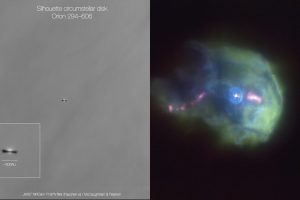Published the manifesto of the international task force for the study of environmental effects on the evolution of protoplanetary disks

Protoplanetary disks are structures of gas and dust that orbit around newly formed stars (referred to as both pre-main-sequence stars and protostars) during their very early evolutionary stages. In fact, they generally disperse in less than 10 million years. Despite their short lifespan, protoplanetary disks play a crucial role. From the perspective of the star, for example, these disks mediate
» Read more
